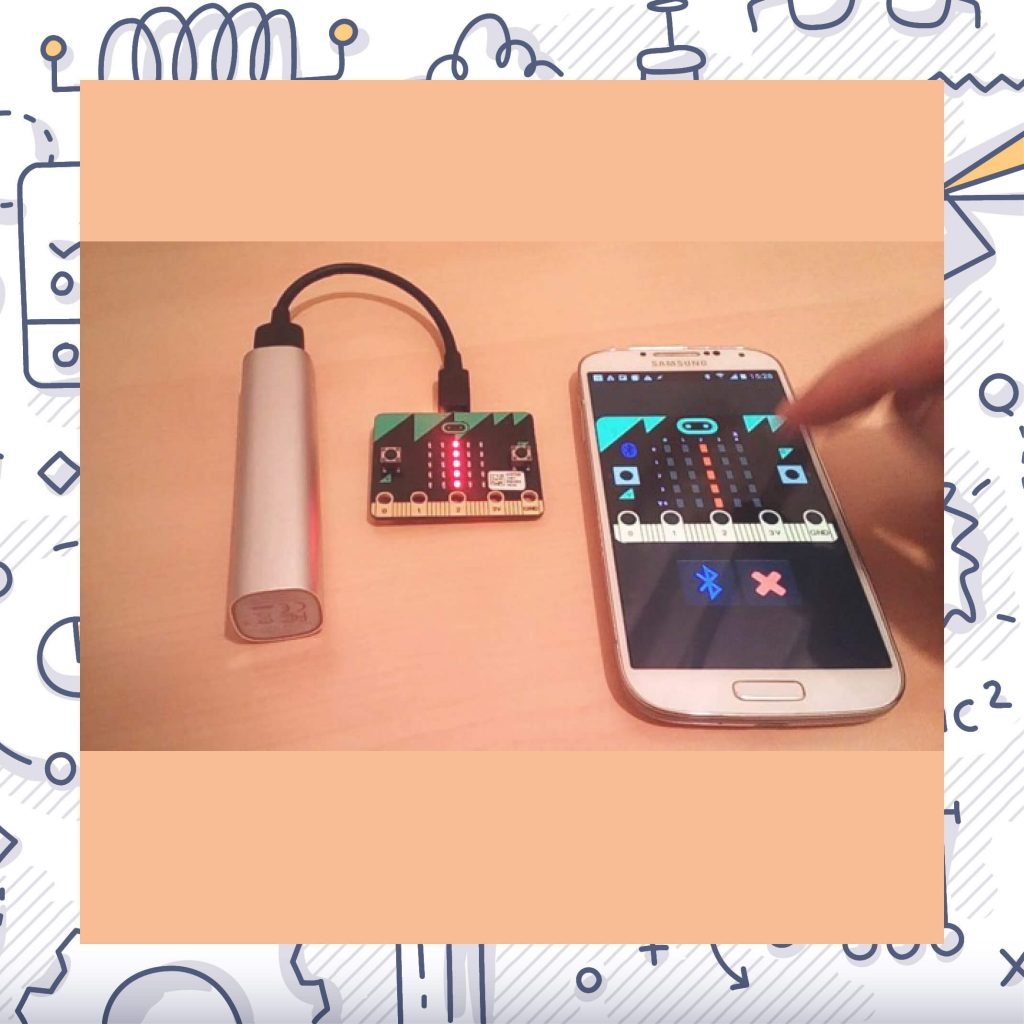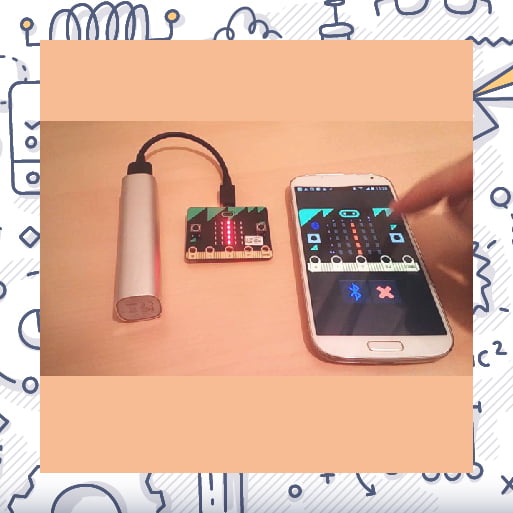
In this program students program with Python (MuEditor-MicroPython) real sensors via a microcontroller – pocket BBC micro:bit. Students develop projects in Open source environments in both Hardware and software (open source software and hardware). They learn to program in a Text-Base language which is one of the most famous programming languages as well as a language of the future. Due to its simplicity, it helps us to understand in depth the mechanisms of programming. Python is designed to be easy to understand and fun to use. Fun is a motivation , as beginners can quickly create original tools that allow them to focus on learning programming concepts without having to worry about too many details. Those who will continue to use Python have an important career ahead of them. Python developers around the world immediately find work.
The micro:bit is a computer that students can program, customize, control and bring to life their digital ideas, games and applications. With dimensions 4×5 cm it is designed to be fun and easy to use. Users can create anything from games to cartoons at school and at home, even on the go – all you need is imagination and creativity. This powerful portable, fully programmable computer was designed by the BBC to encourage children to take an active part in writing software and building new devices that will be controlled by it.
Advantages:
Small Volume, Low Cost, built-in sensors, programming in Python, use of Shiled micro: bit add-on for connecting up to 20 sensor- actuators.
In the first workshops we learn to program several sensors separately (eg temperature, humidity, distance from fire, brightness, smoke, etc.) and then combining our previous knowledge we create robotic projects based on student’s ideas, always with the aim of helping humans to solve problems.
In the next workshops the students are divided into alternating roles (eg Developer, electronic circuit maker, manufacturer, etc.) through collaborative learning and assignment of tasks per group (2-3 people) are led on their own to decision making and solution of a problem (project).
This program has been created and delivered by Educational Robotics Olympiad winners professors in educational robotics with many years of experience in all levels of education. It is adapted for 6th Grade Primary School and High School students without prior knowledge and aims at both learning and the joy of creation!
Διαθεματικές Γνώσεις
Physics: Friction, Speed, Power, Laws of Engineering
Programming structures: sequence, repeat selection
Use of professional tools: Voltmeter, Ammeter, resistance measurement, fault finding, etc
Circuit wiring: (DC-Motor sensors, Servo Motor, relays, resistors, potentiometers, Rgb-led etc
Topics:
Topic 1: Introduction and Learning in Python Programming Structures
Topic 2:Practice and use of algorithms in the built-in micro: bit sensors
Topic 3: Introduction, reading and construction of electronic circuits
Topic 4: Apply of external shield micro: bit and connection of sensors with their programming libraries
Topic 5: Measurements with multimeters on an active circuit
Toppic 6: Construction of robotic projects with the micro bit and the use of sensors (Energy smart homes, remote controlled cars with Bluetooth, Alarms, games etc)
